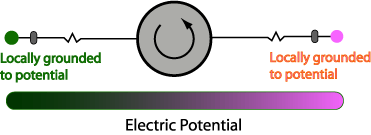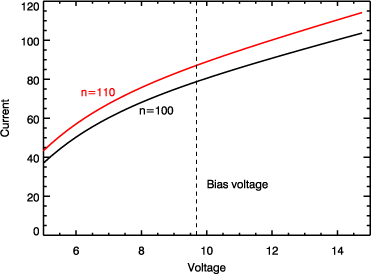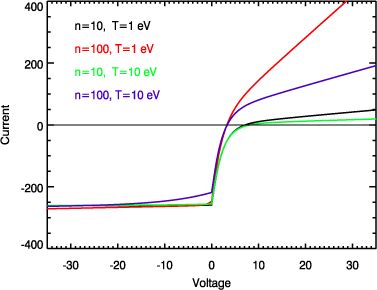
Online Help
Main
Basics
("EFW for
dummies")
Validation
Pitfalls
EFW for Dummies
1. Hardware
2. Spheres
3. Iv curve
4. Current biasing
5. Modes
Related
EFW Home
Operations
|
5. Modes of EFW
The instrument can be run in several different scientific modes (as well
as a much larger number of diagnostic modes). The most common mode
is the electric field mode experiment. Two other less frequently used
modes are Langmuir mode and sweep mode.
5a. Electric field mode
|
|

|
In
this mode, which is the default mode, all 4 probes are run with current biasing.
Since the current biasing "grounds" each probe to the local plasma
potential, the difference between the probe potentials divided by the length
between the probes gives the electric field.
|
5b. Langmuir Mode
|
|

|
In
this mode, the probes are run with a voltage bias, rather than a current
bias. That is, they are maintained at a fixed voltage with respect
to the satellite, and the current is measured.
This mode is most useful in denser plasmas, with the probes biased positive
with respect to the plasma. In this regime, dominated by the plasma
electrons, the collected current depends on the plasma density. This
mode therefore gives high time resolution measurements of the plasma density.
|
5c. Sweep mode
|
|

|
In
this mode, either a bias current
or a bias voltage is swept through the range of interest, and the other parameter
(voltage or current) is measured. In this way, the complete I-V curve
is determined. This curve contains information about:
- the density
- the ion temperature
- the electron temperature
- the maximum photocurrent
In principle, all 4 of these parameters can be found by fitting a curve to
the data. In practice, it is difficult to find the ion temperature.
|
Okay, that's it for "EFW for dummies". Now on to how to actually use EFW data.
Previous page
Up to table of contents
|



